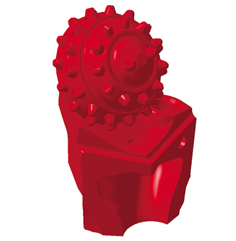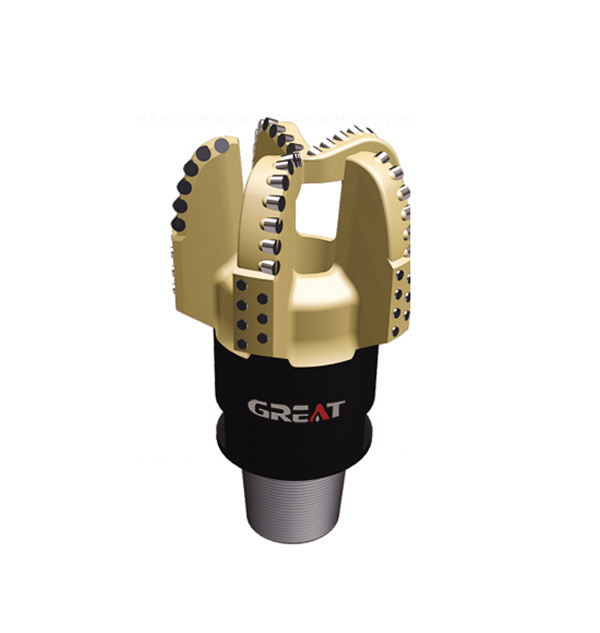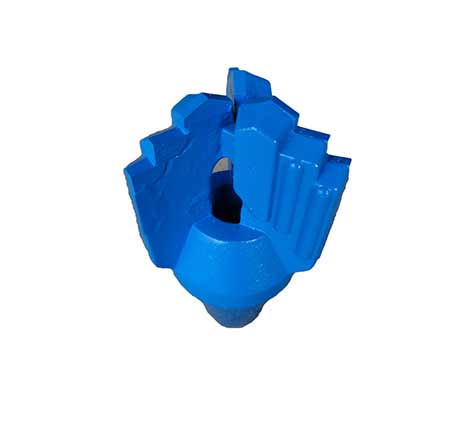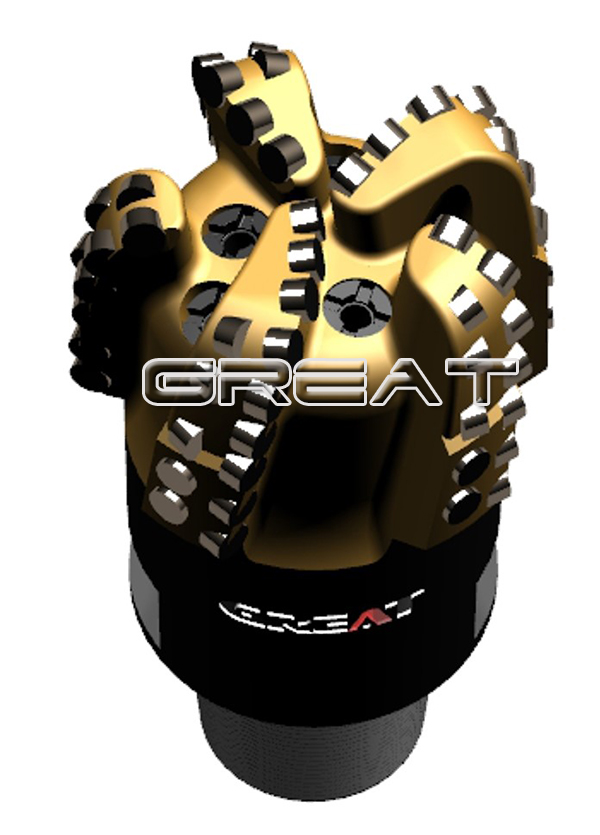Hole reamer is the core component during the reaming process of horizontal directional drilling. In horizontal directional drilling construction, the reamer is a tool to cut and crush the soil and rock along the guiding trajectory. It usually needs multiple stages of reaming and cleaning to enlarge the guiding hole to the appropriate diameter. Reamers can be divided into bucket reamers, plate reamers, fly-cutter reamers, toothed reamers, roller reamers, etc. according to their structural characteristics.
Types of directional crossing hole reamers
Bucket hole reamer
The bucket hole reamer has a certain squeezing and stabilizing function on the borehole wall during reaming. The outer surface of the bucket body is piled up with wear-resistant materials to maintain the diameter and correct the wellbore. The back cover of the reamer is welded with a tungsten carbide hard alloy cutter head with a large tapered conical surface, which is beneficial to reverse reaming in collapsed formation.
Bucket hole reamers can also be divided into general bucket reamers and channel bucket reamers. The latter adopts a spiral channel groove, which is more conducive to the diversion of mud and debris. In addition, there is another type of plate-bucket reamer, which not only has the characteristics of a plate reamer with large cutting edges but also has the squeezing and correcting effect of the bucket reamer on the borehole wall and a large buoyancy, therefore has high reaming efficiency.
Plate hole reamer
The plate hole reamer's cutter body structure uses a large cutting edge to drill in, which can achieve graded reaming. The diameter of the reaming ranges from 480 to 1625 mm, the water eye diameter is 71 to 76 mm, and the number varies from 12, 20, to 24.
Fly-cutter reamer
The fly-cutter reamer adopts hard alloy cutting teeth, and the nozzle installed above it can be interchanged. The diameter of the reamer ranges from 480 to 1625 mm, the water eye diameter is 76 mm, and the number varies from 12, 20, to 24.
Toothed reamer
The toothed reamer has no fixed tooth form and bearing, and the appropriate tooth form and bearing structure should be selected according to different formations. It adopts a back leaning and cold-inserting wear-resistant alloy design and has a toothed anti-loose structure, mainly to prevent the toothed reamer from falling off after the bearing is damaged, which may cause accidents inside the borehole. Toothed reamers are suitable for horizontal directional drilling construction, with high design strength, good wear resistance, long service life, and good safety performance.
A single toothed palm of the toothed drill bit and the toothed wheel can be considered as one cutting edge. The number of cutting edges is three or more, and the reamer is composed of a rear supporting plate, a rear blocking plate, a core axis, a front blocking plate, a front supporting ring, a front supporting plate, a toothed wheel, and a toothed palm. The reamer is connected and fixed by a welding process. The reaming process of the toothed reamer is to provide torque by the screw drill bit and pulling force by the drilling rig.
Roller reamer
The roller reamer adopts a large-diameter metal-sealed rolling cutter design, and the bearing life can reach more than 100 hours. A unique multi-stage anti-loose interlocking device prevents the roller casing from falling off when drilling head air tosses and the bearing is damaged. It also has excellent hydraulic design, which makes the debris discharge smoothly and breaks the rock by hydraulic force. The drill bit is made of high-quality alloy steel forged, and the large drill bit body adopts a weight reduction design to reduce the trajectory deformation.
Geologic applicability of hole reamers
Reaming is crucial in non-excavation directional crossing construction, and the quality of the borehole directly affects the success or failure of pipeline backhaul. The structural characteristics of various reamers determine their working methods, usages, and applicable ranges. Among them, bucket reamers, plate reamers, and fly-cutter reamers are suitable for soil layer crossing, and toothed reamers and roller rock reamers are suitable for rock layer crossing. In horizontal directional drilling crossing projects, especially long-distance crossing projects, the adaptability of the reamer to formations is extremely important.
The toothed reamer has the advantages of strong geological adaptability, high design strength, good wear resistance, long service life, and good safety performance, which can further improve reaming efficiency and quality and is suitable for long-distance directional crossing construction. Therefore, it is necessary to optimize and improve the toothed reamer for long-distance horizontal directional crossing project.
 English
English français
français Deutsch
Deutsch Español
Español italiano
italiano русский
русский português
português العربية
العربية tiếng việt
tiếng việt ไทย
ไทย Nederland
Nederland




